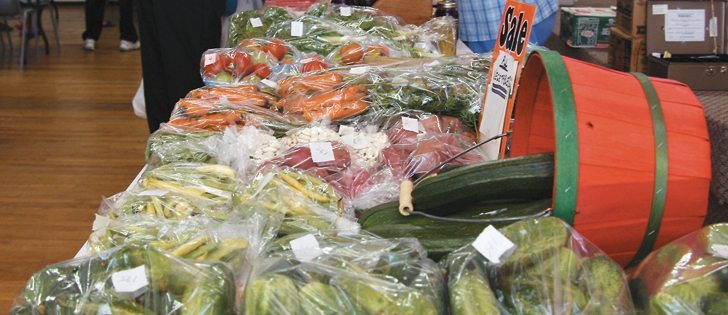Farmers markets thriving | Local markets fill a void left by large grocery retailers, says analyst
Farmers markets continue to post significant increases in sales, says a University of Guelph professor.
Sylvain Charlebois, who specializes in food distribution and policy, said the future looks bright. Farmers markets’ overall economic impact now exceeds an estimated $5 billion annually.
Farmers markets and organic farming operations typically sell food at higher prices than traditional food retail stores, but Charlebois cites several reasons for their continued growth.
“They’re better organized, essentially. I think they’re allowing consumers to know where they are,” he said. “They’re marketing themselves much better. They think beyond the connection between farmers and consumers. They think about the events and experience when you walk on site.”
Read Also

Farm auctions evolve with the times
Times have changed. The number of live, on-farm auctions is seeing a drastic decline in recent years. Today’s younger farmers may actually never experience going to one.
He said farmers markets are getting good at filling what he called a void left by traditional retailers.
“I’ve visited many farmers markets, and I actually do believe that they are making an effort in making the visitations much more of an experience than just going to one place to get some produce and then move on,” he said.
Transparency and authenticity are key factors for consumers, who are increasingly better educated and more demanding of where they’re food comes from and how it is grown.
“When you go to a farmers market, the person selling you the product can tell the consumer it was picked up this morning, or I was looking at that particular plant for a while and now it’s ripe. They can talk about the soil, the fertilizers, the moisture or the lack thereof, depending on the season,” he said.
“Those are the kinds of things that consumers really are yearning for more and more, to better appreciate where their food is coming from.”
He said consumer expectations are returning to a time when having a human experience was a necessary ingredient when buying food.
“On the demand side, there are more and more people looking for a story behind the food they eat. How better to get a story than go to a farmers market and talk to farmers, talk to brokers, people selling the food,” he said.
“Farmers markets just cannot compromise how human and normal people and food should be. It’s not just about stocking the shelves and making sure that all the apples and carrots look beautiful and ripe.”
Sue Echlin thinks farmers markets will continue to grow, particularly on the Prairies where people have maintained a connection to agriculture.
“There’s still a very strong attachment to agriculture on the Prairies,” said Echlin, who is vice-president of the Saskatoon Farmers’ Market and owns Living Sky Winery with husband Vance Lester in Perdue, Sask.
“Even when people move to urban centres like Saskatoon, they still want to be able to experience that, and I think they have an understanding of the need to support agriculture.”
Prices are perceived as higher at farmers markets, but Echlin said she has watched consumers’ attitudes change based on the questions they ask her at the market.
“Three years ago, people were really concerned with price, and now people are more concerned about, ‘are you chemical free, do you hire local people, what goes into this product,’ and very rarely do I get asked the price question anymore,” she said.
“That’s been a huge shift. People recognize locally grown food, whether it’s certified organic or not, is generally grown on a smaller scale and with more care than any of the factory farms.”
















